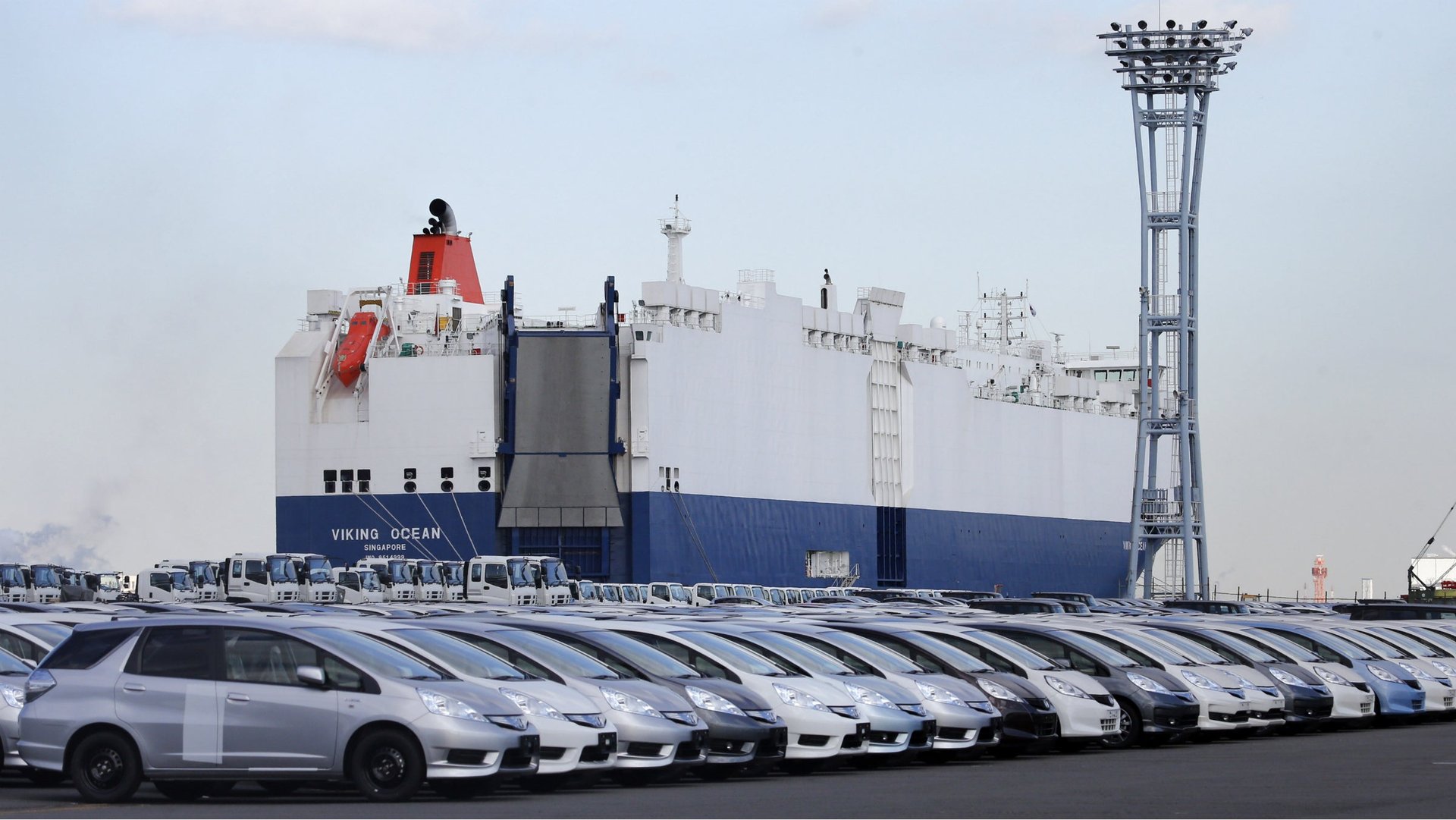If Japanese exports have gotten so cheap, why isn’t everyone buying them?
As new data from Japan shows, just because your exports are cheaper doesn’t mean people can afford them (or, in the case of China, want to buy them at all). Despite the yen-weakening effects of Abenomics, Japan posted its 10th straight month of trade deficits on Wednesday—and the gap in April was almost 70% wider than last year.


As new data from Japan shows, just because your exports are cheaper doesn’t mean people can afford them (or, in the case of China, want to buy them at all). Despite the yen-weakening effects of Abenomics, Japan posted its 10th straight month of trade deficits on Wednesday—and the gap in April was almost 70% wider than last year.
The total value of exports did rise 3.8% to ¥5.78 trillion ($56.3 billion) in April from a year earlier, but real export volumes actually fell 5.3%. As the yen is already down 16% against the dollar this year, why aren’t cheaper Japanese exports being snapped up?
Stagnant global demand, especially in Europe, is one big reason. Japanese exports to the continent fell by 3.5% in April—the 19th straight month of declines. China is also a problem due to continued tension over the disputed Senkaku/Diaoyu islands, which has hurt trade between the countries. Exports to China rose by just 0.3% in April. At least it’s not all bad news for Japan: exports to the US grew by 14.8%.
On the other side of the trade deficit ledger, imports rose 9.4% to ¥6.67 trillion. That defies the common-sense expectation that Abenomics would result in fewer imports as foreign currencies gain against the yen. But as the Financial Times explains, it can take a while for a weaker currency to produce lower trade deficits. What’s more, Japanese consumer confidence has been bolstered by Abe’s policies, boosting overall demand, and Japan has little choice but to import large quantities of oil and natural gas, which are more expensive because of the weaker yen.
Some economists are still confident that given more time, Japan’s trade figures will improve. Naoki Iizuka, an economist at Citibank in Tokyo, told the FT that “the currency factor will likely help improve the [trade] balance starting in the second quarter.” Even then, a revived Japanese economy will require more than just Abenomics—it will need more of Japan Inc’s global customers to start buying again.